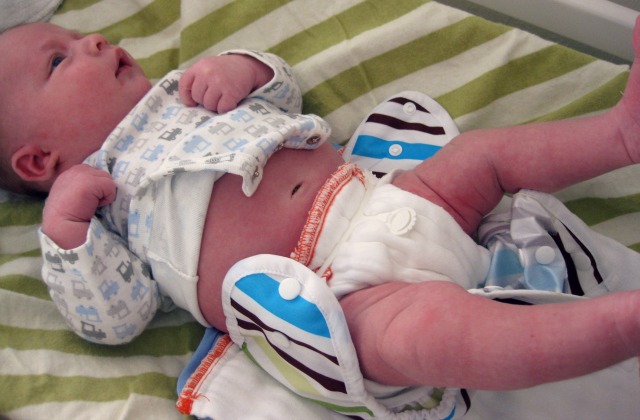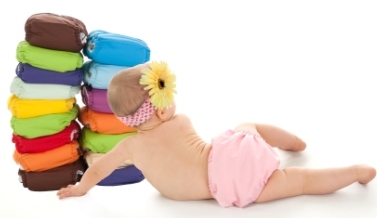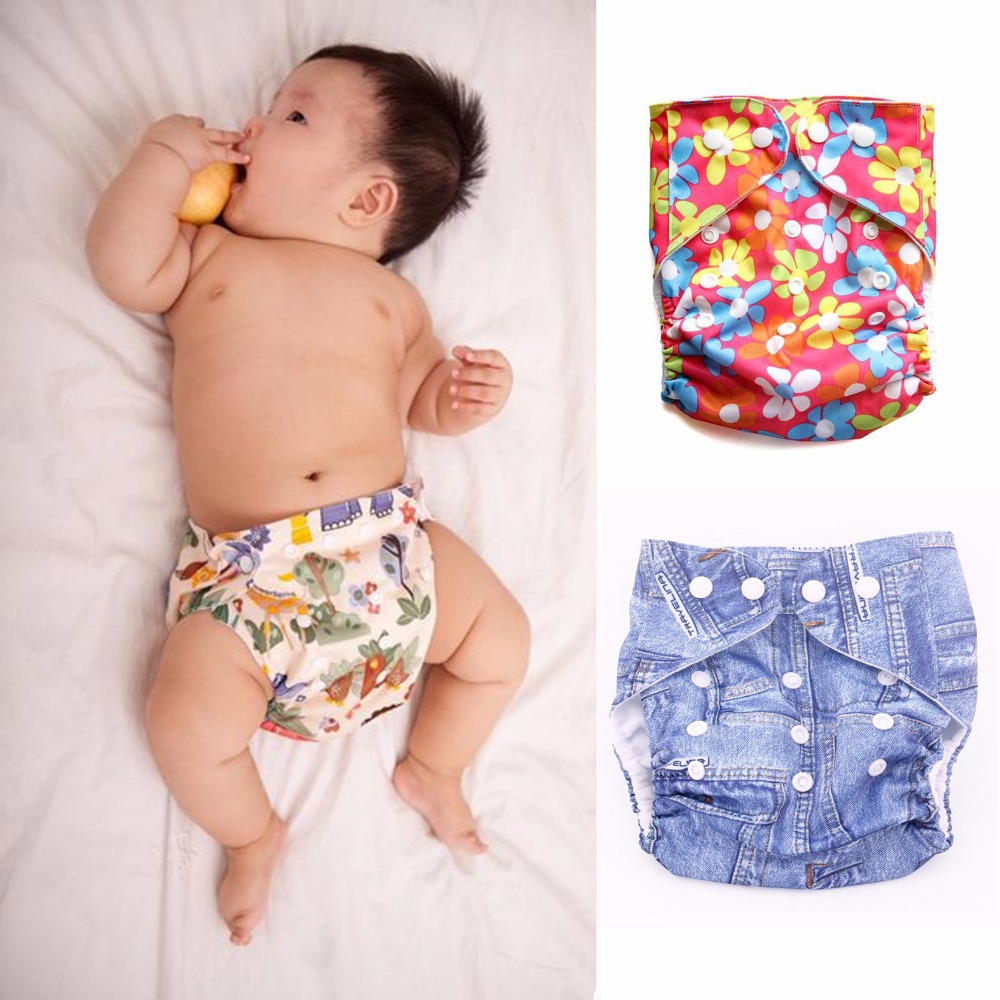Cloth Diapers 101 - Everything you need to know
A comprehensive 101 guide to using cloth diapers for your child
Nov 09, 2018

What are Prefolds?

Prefolds are flat diapers that have been folded and sewn to create a thicker layer in the middle, they are the basic cloth diapers, usually made of cotton, with about 4 to 8 layers of fabric and it has to be folded around your baby’s waist. Prefolds are cut in rectangles and vary in size, some of the most common folds are the angle fold, the pad fold, and the twist. They are used together with waterproof covers and are the cheapest option in the market of cloth diapers.
What types of cloth diapers are there?

Source: Google Images
1.Hybrid cloth diapers
Hybrids combine the benefits of cloth and disposable diapers. They are made up of a waterproof outer layer and two absorbent inner layers. For the inner layer, you have the choice of inserting either cloth or disposables, cloth inserts are mostly made of cotton, hemp, and other soft fabrics. They are usually biodegradable and generate less waste than their counterparts, the diaper cover too is reusable. Hybrid diapers are the most expensive option of cloth diapers and are designed to function with ease.
2. Fitted cloth diapers
Fitted diapers are absorbent fabrics with elastic at the waist and around the legs for a perfect fit. They are just like all-in-ones but do not have the built-in waterproof cover feature. Fitted diapers usually come with their own closures and are fastened at the front with velcro, snaps or pins. They are super absorbent and best for nighttime diapering. With fitted diapers, you need waterproof covers and they are mid-range in price.
3. All-in-one cloth diapers
As their name suggests AIO diapers are a single piece with no folds and layers. All-in-ones (AIO) are very much like disposables, they have a waterproof outer shell and an absorbent inner layer all in one piece. They are adjustable in size due to a series of snaps or velcro at the hips that can be fastened.
4. All-in-two cloth diapers
All-in-twos (AI2) is a two-piece system, they are a combination of an outer waterproof layer and an absorbent insert. The insert sits directly against your baby’s skin and can easily be removed. They tend to dry faster than the AIOs because they can be separated. The waterproof shell could be used for multiple diaper changes before washing.
5. Contour cloth diapers
Similar to prefolds, they don’t have their own closures, Contour diapers do not need to be folded to fit. They need a waterproof cover and snaps or pins to hold them in place.
6. Flat cloth diapers
Flats are the real grandma cloth diapers, they are simply a thin single layer piece of square cloth that is folded multiple times to fit your baby. They are folded around a baby according to their need like for example it could be folded to be thicker in front for boys and at the back for girls. Some popular folds are the kite fold, the pad fold, origami fold, the airplane fold, and the diaper bag fold. It is all held in place with a snappie or diaper pins.
What are Pocket Cloth Diapers?
Pocket cloth diapers come in two parts, the outer waterproof layer with a built-in interior pocket and a soft absorbent insert to slide inside the pocket. The parts of a pocket diaper are separated during washing so they dry fast. The interior pocket can be stuffed with one or two inserts to customize the level of absorption according to your baby’s needs. The outer layer is made of waterproof fabric while the inner layer and its inserts vary between cotton, microsuede, bamboo, and hemp fabric. The price range of pockets is usually mid to high range depending on the fabric.
4 Basics of using Cloth Diapers

source: google images
According to Beth Eckert, the founder of The Cloth Diaper Connection, a platform encouraging moms to use cloth diapers, the most valuable tip for getting started with cloth diapers is to buy one of each kind and test them for a couple of days to find out what works best for you. She says it will be a huge mistake to spend much money on a single kind only to find out that it’s not what you want.
When it comes to using cloth diapers here are a few basic things you have to bear in mind.
1. How Many Diapers Do I Need?
Source: Google Images
After deciding what your preferences are, the next step is to know the right amount you need. The younger your baby, the more you need. Newborns generally need more changes a day than toddlers. Buy enough to last about 3 days between every wash. Experts say the ideal amount is about 2-3 dozen diapers. Also, bear in mind that the more you have the longer it will last as you will wash each less often.
2. Get your Diaper Covers

They are practically a must when it comes to cloth diapers. Covers make cloth diapering easier, it holds the diaper in place and is the waterproof layer that makes sure there is no water escape. Covers also make diapers stylish and fun as they come in a variety of bright colors and cute prints.
3. Finding the right fold

source:google images
There are quite a number of folds out there you can use, starting with pre-folds that can be used instantly or the kite fold, the pad fold, origami fold, the airplane fold, and the diaper bag fold. Learn about the folds and pick the one that suits your baby best. For newbie cloth diapering moms, it is recommended to use prefolds until you get a hang of the folds.
4. Washing Cloth Diapers

With regards to laundry, it is advisable to wash new diapers when you buy them. Some diapers need to be washed several times before becoming absorbent, it all depends on the fabric they’re made from. For example, cotton will become absorbent faster than hemp. Use a mild detergent and natural soap to wash them, wash about twice and rinse thoroughly to eliminate every residue.
To wash used diapers, first of all, empty its content into the toilet, you could attach a diaper sprayer to your toilet to ease the process. You should the diaper in a pail soak or dry whichever you prefer until it’s time to put them in the washer, then wash them with the highest level of water your washer allows with mild detergent, avoid bleach as much as possible. There is also the option of using a diaper service to pick up your dirty diapers every few days for washing.
Sewing your own cloth diapers

Making your own cloth diapers is not as difficult as it seems, lots of parents actually do it.
First of all, you will need a fabric that is absorbent, like cotton, hemp, linen, and other natural fiber fabrics.
You will also need elastic, solid enough to stand constant washing, hot-water, and detergent like swimwear elastic. The outer layer of your diaper could be any fabric from old sheets to old bad towels but the inner part that is in contact with your baby’s bottom has to be soft and absorbent with a high percentage of cotton.
Fasteners are also needed to keep diapers on your baby, for self-fastening diapers you need snaps, a hook and loop tape(Velcro). It all comes down to what you prefer.

- Following the pattern, cut three pieces from the main fabric for the outside and two pieces from the soaker or absorbent fabric for the inner layer.
- Assemble the layers and sew together with a zigzag stitch, place the inner layer facing up and the outer layer facing down, then the layer in between place the soaker face up, pin the layers and sew from edge to edge leaving about 4 inches gap for turning.
- Sew in the elastic depending on how stretchy you want it to be and according to your baby’s measurements. Use the hole you left out earlier and turn the fabric inside out.
- Now, you’ll stitch around the top of the diaper closing the hole you previously left out.
- Then attach the velcro, cut a piece of the velcro and round the corners to prevent them from poking your baby, sew on the fabric and then add the hook on the opposite side and stitch.
- Your diaper is ready to use now. You can make diaper doublers for extra absorption and diaper covers for more protection.
A couple of already tried and tested patterns could be found online, if you are trying to make diapers for the first time you may want to consider one of these patterns.
Conclusion

source: google.com/images/creativecommons
Having so many options could be quite confusing, your best bet is to go to a local baby shop and check out the various options. Some stores offer a test-drive option where you can use the diapers for 30 days and return them if you are unsatisfied. In the end what really matters is that you find the perfect option for you and your baby or even if you do not you can sew your very own customized version with fabric, patterns, and accessories that are to your liking. So are you ready to start cloth diapering?
